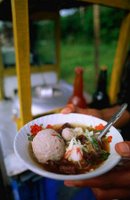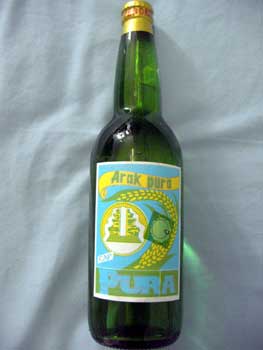
Dive operators in
The wreck dive site in Tulamben beach Bali is a United States Army transport and was built at the
The ship was re-measured at 6,211 tons, was bound from Australia to Philipina on January 11, 1942 with a cargo of railway parts and rubber for the war effort when she was torpedoed by Japanese submarine I-166 about 10 mi (19 km) southwest of Lombok Strait. They towed the damaged ship in tow attempting to reach Singaraja, the Dutch port and administrative centre for the Lesser Sunda Islands, on the north coast of Bali. However she was taking too much water and so was beached on the eastern shore of
In 1963 the tremors associated with the eruption of Mount Agung caused the vessel to slip off the beach, and she now lies on the sand slope, is at 5-10m. Depth along the middle of the wreck is 16-20m. The lower edge of the wreck furthest down the slope is 20-28m (at high tide). The wreck is 120m long, it's pretty broken up but you can still see the guns, toilets, boilers , anchor chain, etc. It is a lovely dive site, possibly the world's easiest wreck dive, providing one of the most popular dives off
You can also snorkel on the wreck - the highest point of the stern is about 4m below the surface.
Visibility is usually 18-25m, lower when it has been raining. There is rarely a current present; at most it will be mild. During the 3 days before the full moon, there are usually waves. The air temp is 25-32 degrees, the water 26-28 degrees.
The wreck is very popular with photographers as it is totally encrusted in anemone, gorgonians and corals. The black sand provides an excellent colors contrast for the incredible variety of marine life, which includes a huge school (literally 100s) of 10-12inch silver fish called Big-Eyed Trevally and over 400 other species of fish.
From the Goatfish and Wrasse that nibble around your feet and fins during entry/exit to the Unicorn fish and Surgeonfish which make a (slightly alarming the first time you see them!) beeline for your mask as you swim down towards the Wreck.
It is quite difficult to list what you will see because you'll see just about everything in any Indo-Pacific Reef Guide book if you dive here. From the minute Anglerfish, neon nudibranches, Ghost Pipefish, shrimp/goby sets; through to the areas of Garden Eels and multi-colored clouds of anthias and damsels and on to the schools of Sweet lips, Batfish, fusiliers, Butterfly fish, the variety is amazing. Then there are the invertebrates, the hard and soft corals, black corals, sponges with crinoids, sea fans, tunicates.
Night diving on the wreck is great especially during the full moon. You may see Spanish Dancers, flashlight fish, phosphorescence.



